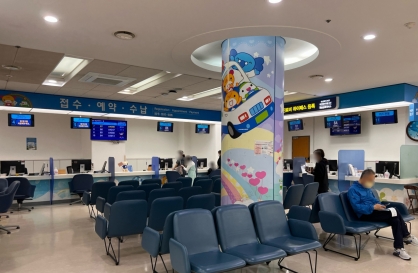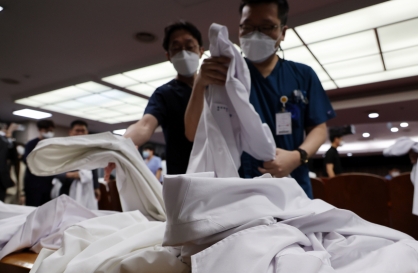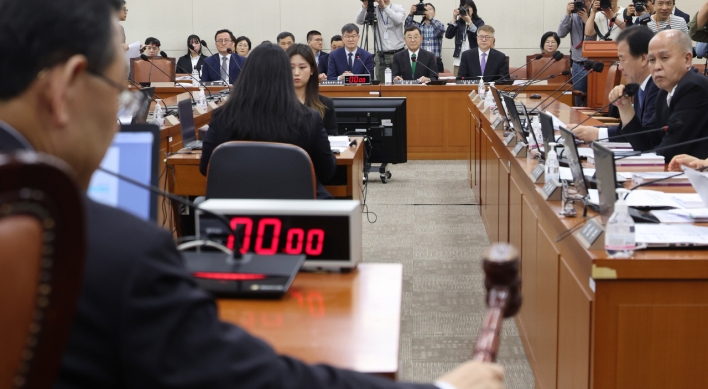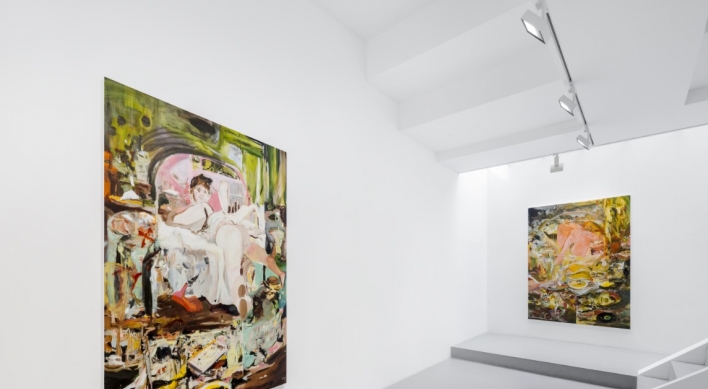Television still most powerful among news media outlets: study
By Korea HeraldPublished : Feb. 7, 2013 - 21:16
Korea’s three largest-circulation daily newspapers account for more than half of all newspapers’ power to influence public opinion, a government panel concluded Thursday.
Television proved to be the most powerful media outlet, while conventional print media is losing ground to online media.
This is the first time a survey on the concentration of media outlets’ power to influence the formation of public opinion has been conducted, with the aim of getting “an objective view of the media market.”
According to the three-year study by a panel under the Ministry of Culture, Sports and Tourism, television marked 47.2 percent in weighted concentration ratio ― a measure of influence based on market share and strength of impact ― followed by online news outlets at 26 percent and newspapers at 17.3 percent, showing that people paid the most attention to the small screen.
TV news and investigative programs were shown to be influential among people of all generations, while newspapers attract older people and youngsters were drawn to online outlets.
Among the 70 daily newspapers in the country, the three largest dailies ― Chosun, JoongAng and Donga ― held 57.6 percent of the concentration ratio. Chosun marked 23.7 percent, JoongAng 17.9 percent and Donga took 16 percent. Only seven other papers recorded 2 percent concentration ratio.
When it comes to online news, Chosun.com, the website for the Chosun Ilbo newspaper, topped the chart with 7.6 percent followed by the websites for JoogAng Ilbo, 6.8 percent and Yonhap News, 5.9 percent.
State-run broadcaster KBS accounted for 29 percent of concentrate ratio, followed by broadcasting networks MBC at 10.7 percent, and SBS at 7.5 percent. Chosun Ilbo newspaper and its affiliates including the general programming cable channel TV Chosun marked 7 percent concentration ratio followed by JoongAng and its affiliates, 5.4 percent, Donga and its affiliates 5.3 percent, Maeil Economic Daily and its affiliates, 4.6 percent, Yonhap News Agency and its affiliates, 2.4 percent, and YTN and its affiliates, 2.3 percent.
The research was conducted on 70 daily newspapers, 10 TV stations with 11 channels, 13 radio stations with 19 channels, and 117 online news websites between 2011 and 2012. The outlets’ shares on readership, viewing, listening and duration time as well as a survey of 7,000 people and others were reflected in the final results.
“We believe the research could contribute to a ‘plurality’ in the media market by looking at the strongest and the weakest. The second report is due to come in 2016, and will include social media services such as Twitter or Facebook and use of smartphones as media platforms,” said Chungnam National University professor Cho Sung-kyum, who headed the panel.
“Based on the report the government will seek to support regionally-circulated newspapers by legislating a relevant law. We will also seek to hold training programs in the latest media trends for people in the business,” said Park Young-gook, a Culture Ministry official.
By Bae Ji-sook (baejisook@heraldcorp.com)
Television proved to be the most powerful media outlet, while conventional print media is losing ground to online media.
This is the first time a survey on the concentration of media outlets’ power to influence the formation of public opinion has been conducted, with the aim of getting “an objective view of the media market.”
According to the three-year study by a panel under the Ministry of Culture, Sports and Tourism, television marked 47.2 percent in weighted concentration ratio ― a measure of influence based on market share and strength of impact ― followed by online news outlets at 26 percent and newspapers at 17.3 percent, showing that people paid the most attention to the small screen.
TV news and investigative programs were shown to be influential among people of all generations, while newspapers attract older people and youngsters were drawn to online outlets.
Among the 70 daily newspapers in the country, the three largest dailies ― Chosun, JoongAng and Donga ― held 57.6 percent of the concentration ratio. Chosun marked 23.7 percent, JoongAng 17.9 percent and Donga took 16 percent. Only seven other papers recorded 2 percent concentration ratio.
When it comes to online news, Chosun.com, the website for the Chosun Ilbo newspaper, topped the chart with 7.6 percent followed by the websites for JoogAng Ilbo, 6.8 percent and Yonhap News, 5.9 percent.
State-run broadcaster KBS accounted for 29 percent of concentrate ratio, followed by broadcasting networks MBC at 10.7 percent, and SBS at 7.5 percent. Chosun Ilbo newspaper and its affiliates including the general programming cable channel TV Chosun marked 7 percent concentration ratio followed by JoongAng and its affiliates, 5.4 percent, Donga and its affiliates 5.3 percent, Maeil Economic Daily and its affiliates, 4.6 percent, Yonhap News Agency and its affiliates, 2.4 percent, and YTN and its affiliates, 2.3 percent.
The research was conducted on 70 daily newspapers, 10 TV stations with 11 channels, 13 radio stations with 19 channels, and 117 online news websites between 2011 and 2012. The outlets’ shares on readership, viewing, listening and duration time as well as a survey of 7,000 people and others were reflected in the final results.
“We believe the research could contribute to a ‘plurality’ in the media market by looking at the strongest and the weakest. The second report is due to come in 2016, and will include social media services such as Twitter or Facebook and use of smartphones as media platforms,” said Chungnam National University professor Cho Sung-kyum, who headed the panel.
“Based on the report the government will seek to support regionally-circulated newspapers by legislating a relevant law. We will also seek to hold training programs in the latest media trends for people in the business,” said Park Young-gook, a Culture Ministry official.
By Bae Ji-sook (baejisook@heraldcorp.com)
-
Articles by Korea Herald





![[Herald Interview] Mom’s Touch seeks to replicate success in Japan](http://res.heraldm.com/phpwas/restmb_idxmake.php?idx=644&simg=/content/image/2024/04/29/20240429050568_0.jpg&u=)



![[News Focus] Lee tells Yoon that he has governed without political dialogue](http://res.heraldm.com/phpwas/restmb_idxmake.php?idx=644&simg=/content/image/2024/04/29/20240429050696_0.jpg&u=20240429210658)









![[Today’s K-pop] Seventeen sets sales record with best-of album](http://res.heraldm.com/phpwas/restmb_idxmake.php?idx=642&simg=/content/image/2024/04/30/20240430050818_0.jpg&u=)